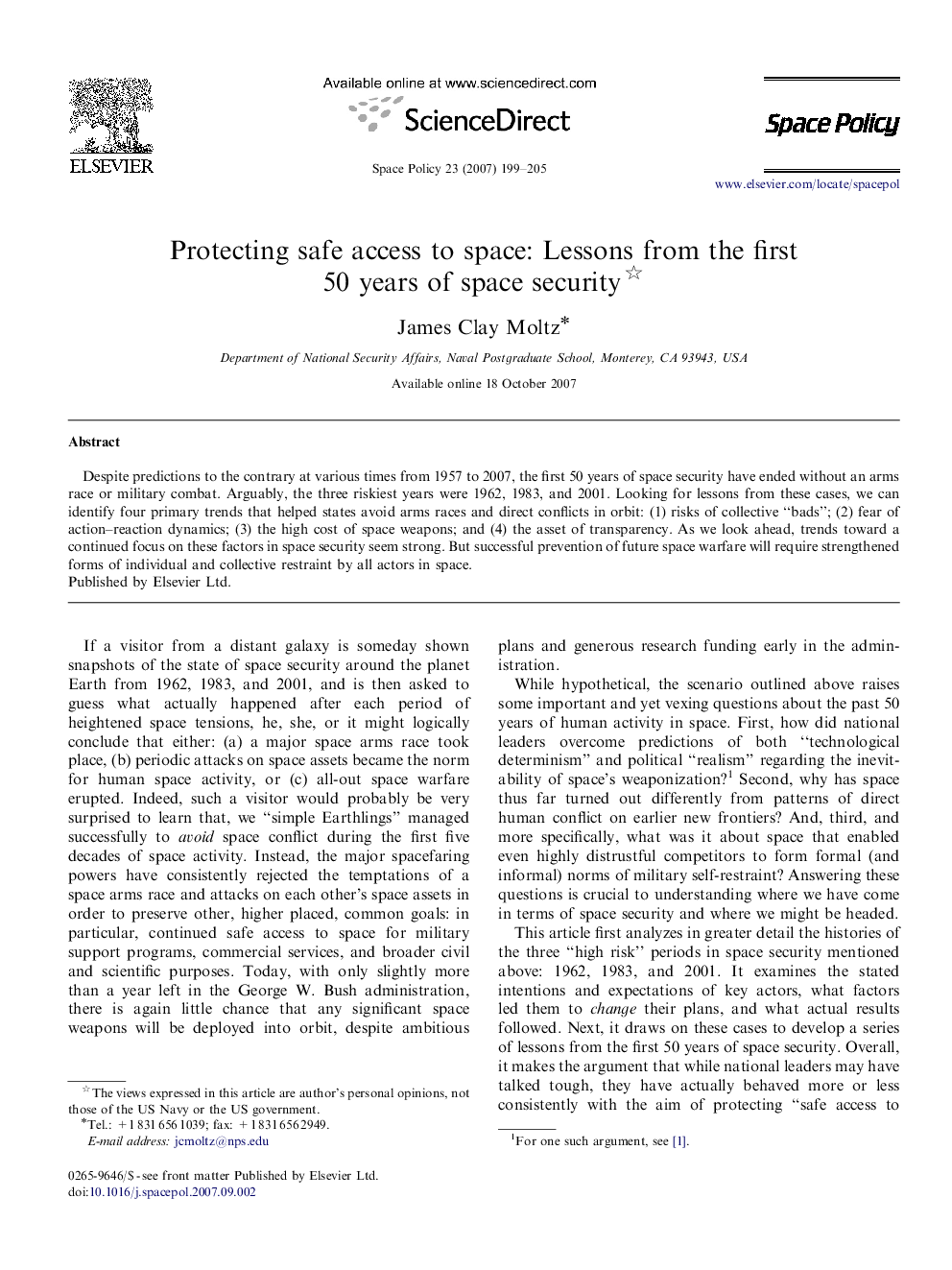| Article ID | Journal | Published Year | Pages | File Type |
|---|---|---|---|---|
| 1131440 | Space Policy | 2007 | 7 Pages |
Abstract
Despite predictions to the contrary at various times from 1957 to 2007, the first 50 years of space security have ended without an arms race or military combat. Arguably, the three riskiest years were 1962, 1983, and 2001. Looking for lessons from these cases, we can identify four primary trends that helped states avoid arms races and direct conflicts in orbit: (1) risks of collective “bads”; (2) fear of action–reaction dynamics; (3) the high cost of space weapons; and (4) the asset of transparency. As we look ahead, trends toward a continued focus on these factors in space security seem strong. But successful prevention of future space warfare will require strengthened forms of individual and collective restraint by all actors in space.
Related Topics
Social Sciences and Humanities
Social Sciences
Sociology and Political Science
Authors
James Clay Moltz,
